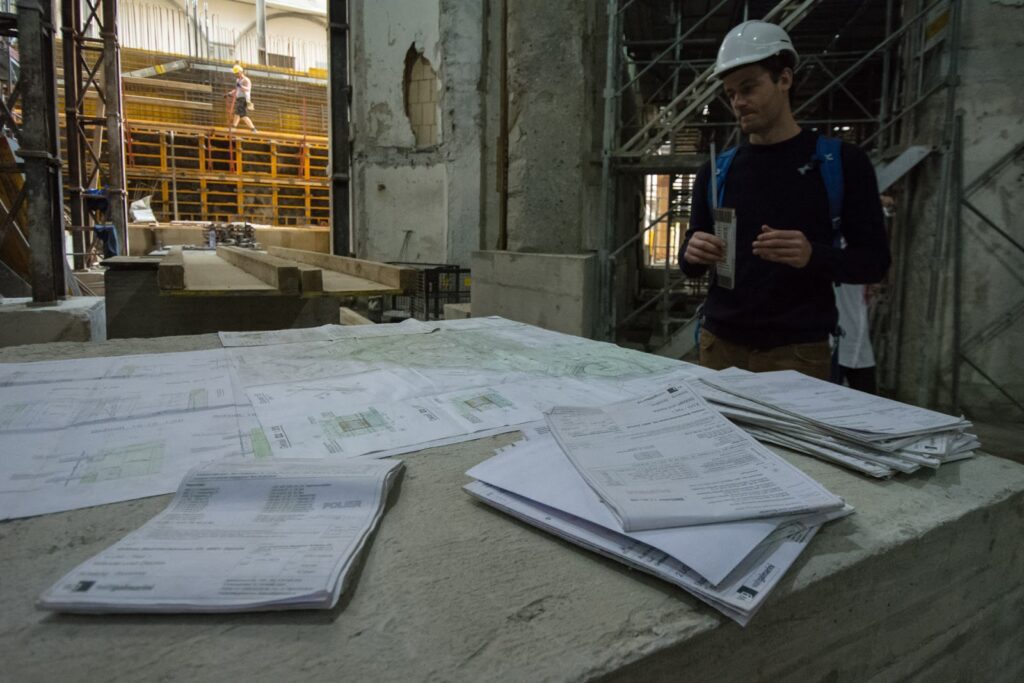











 SCROLL & LEARN MORE
SCROLL & LEARN MORE




Civil engineers and architects lead an everlasting “battle” between the fields. While both disciplines may look very similar in terms of the subjects included and are often found in the same faculty, they have a few key differences. Both of these professions have a crucial function and are essential to any construction job. They always need to rely on one another to accomplish the tasks.
To understand the competitive nature of their relationship, first of all, we must know and distinguish the responsibilities they have.
Architecture is the process of planning and designing buildings and spaces. It focuses more on the functionality and aesthetics of the development work and concentrates on the art, look, feels, and design.
The architect must be fluent in the software for creating 2D and 3D models. An architect possesses great creativity, vision, and is usually also very organized.
Job responsibilities of the architect:
– Meetings and presentations with the clients;
– Managing designs and concepts of the projects;
– Preparing drawings, blueprints, specifications and construction documents;
– Research and adjust the environmental aspect of the project
– Apply safety standards and local planning regulations;
– Estimate the budget and the timeline.
Generally speaking, architects are involved in the development of construction projects which require a creative presentation. They have a unique mindset that allows them to think of something that hasn’t ever been done before.
As a discipline, civil engineering deals with the design, maintenance, and construction of the physical and naturally built environment. It focuses on the practical, and the civil engineers spent a lot of their time overseeing the projects and the construction sites. These engineers have a strong background in math and a problem-solving mindset that helps them in finding solutions to issues that may arise during the construction.
Job responsibilities of the civil engineer:
– Static calculations;
– Manage, design and develop construction projects;
– Follow regulations for project hazards;
– Perform surveying operations
– Supervise and maintain the infrastructures;
– Manage budget and purchase equipment and materials;
– Assess potential risks, material, and costs.
In general, civil engineering is a very broad term that includes many different disciplines like Structural, Geotechnical, Environmental, Transportation, Water Resources, Construction, and Urban & Planning Engineering. It focuses on the execution part of the design process and very often maintains all the other aspects.

Well, like in every sibling’s relationship, things that have a lot in common tend to get competitive and want to prove they are “harder to do” and they require more knowledge and dedication.
This is happening mostly because of the stereotypes that follow these professions.
The society still portrays architects like a caricature image of overworked, underpaid artistic wannabes that dress in black and hang out exclusively with each other. That they use the word “sustainable” a lot and don’t work well with others, because they think their ideas are always the best.
Civil engineers are also often stereotyped, portrayed as not creative, confused for constructors or architects. Also, the profession is considered to be a “male” exclusive one.
These things give a bad name to some great and very important professions. Often resulting in frustration and a feeling that one must explain to others what is doing for a living.
Very often civil engineers supervise the whole project, and with that also the work of the architects.
With all this fuzz around who is better and why – this battle in engineering is a never-ending story.
Competition can be a great thing! It can do wonders if you look at it the right way. This is very important in “sibling” industries like architecture and civil engineering, where competition can be used for the good of the project. Stimulating team members that come from different backgrounds to compete with each other can bring the best in them.
We must say that we hope for the war to be settled soon. Especially now when with the new technologies that are used, engineers are “forced” to work together even in the earliest stages of the project.
Architects and civil engineers can not work alone without the help of one another. That is why we call them the two faces of the same coin: fields that are very closely related although seem different.
They very often overlap during the process of construction. We can conclude that they have a symbiotic relationship with each other.
They are both very valuable academically and each has its own benefit and uniqueness.
—
Breon Engineering is a company where architects and civil engineers work hand in hand. One of the most important things for us is the balance in life, both personally and professionally.